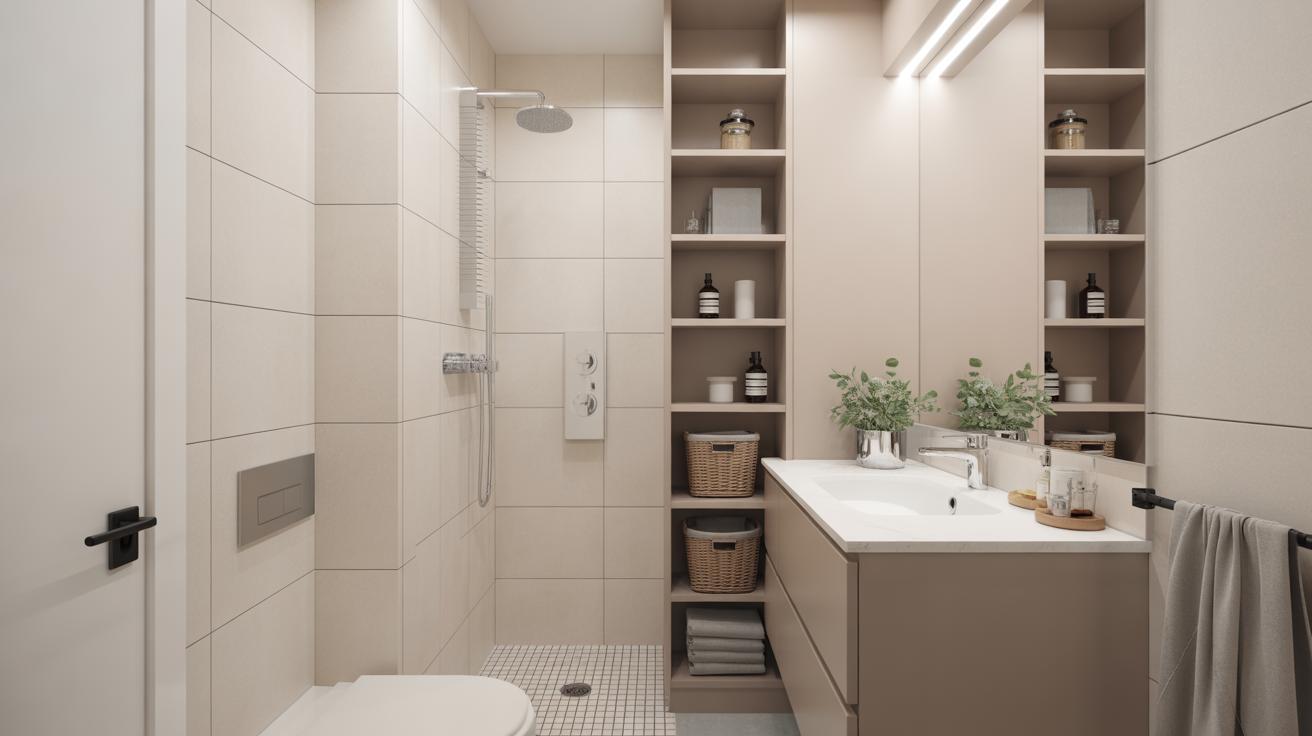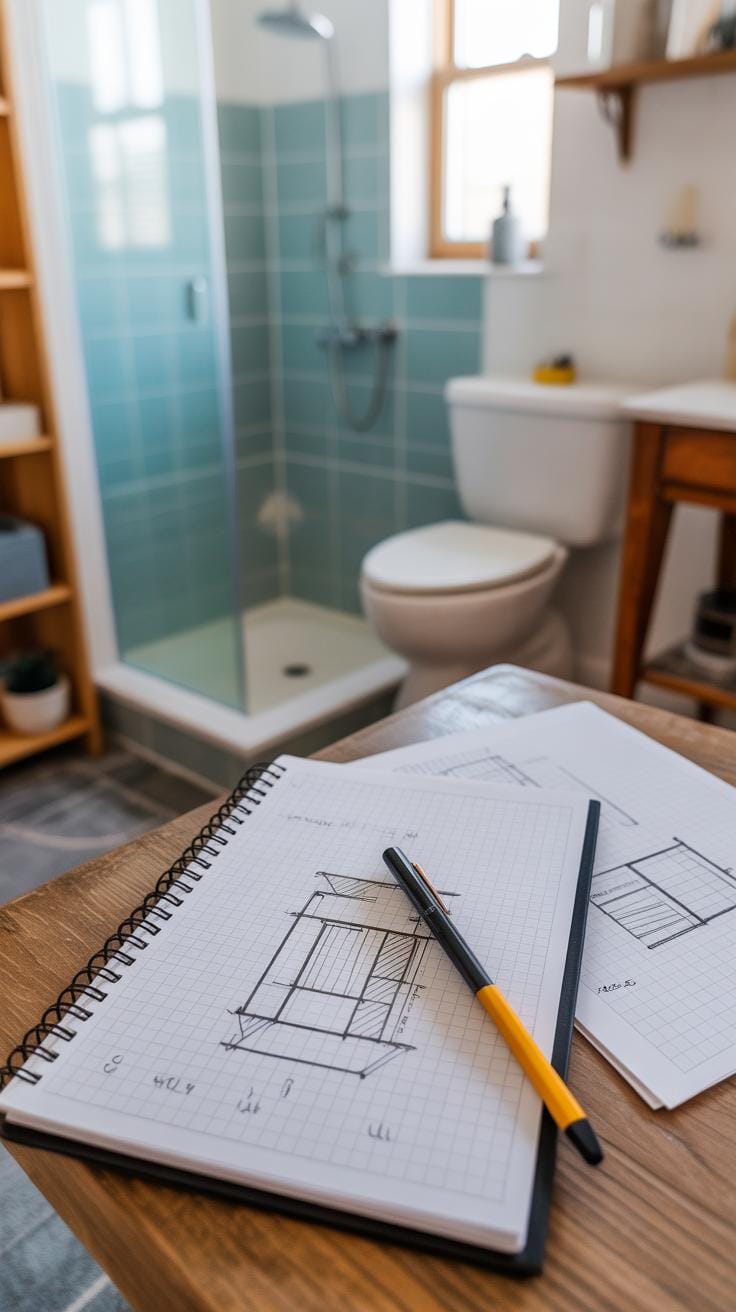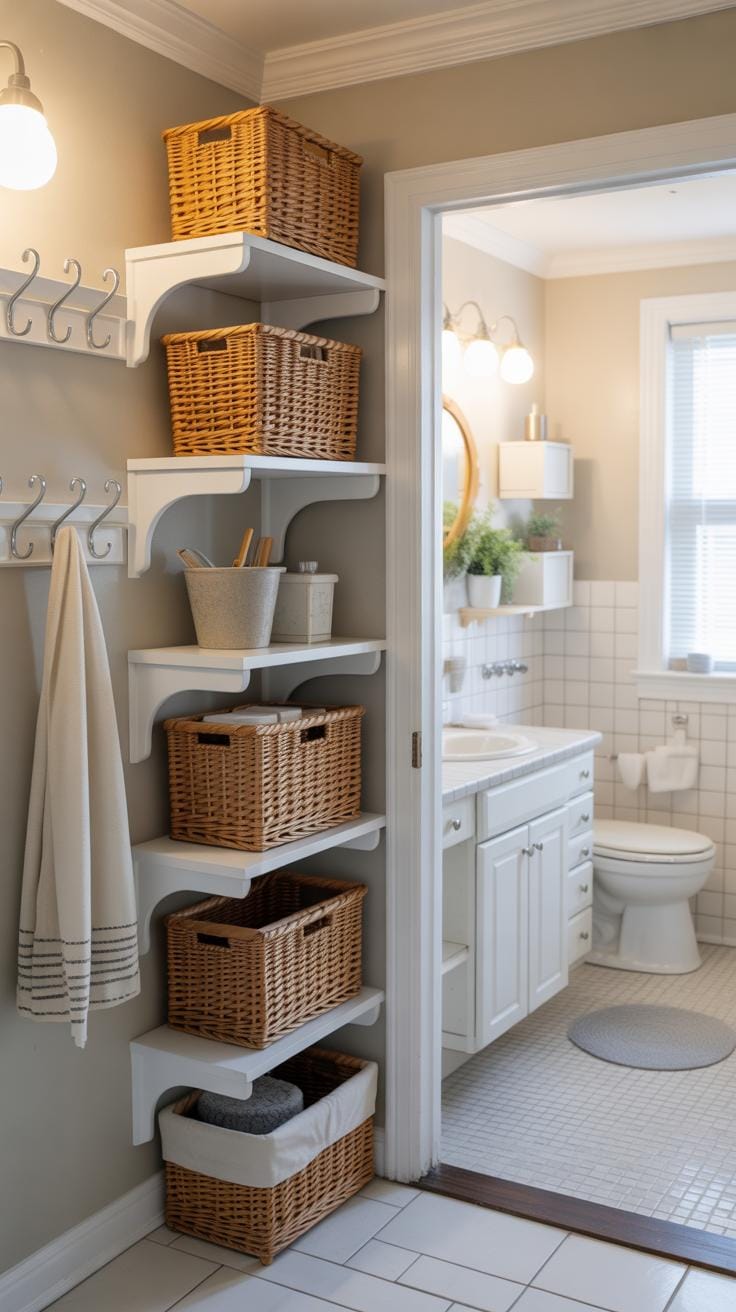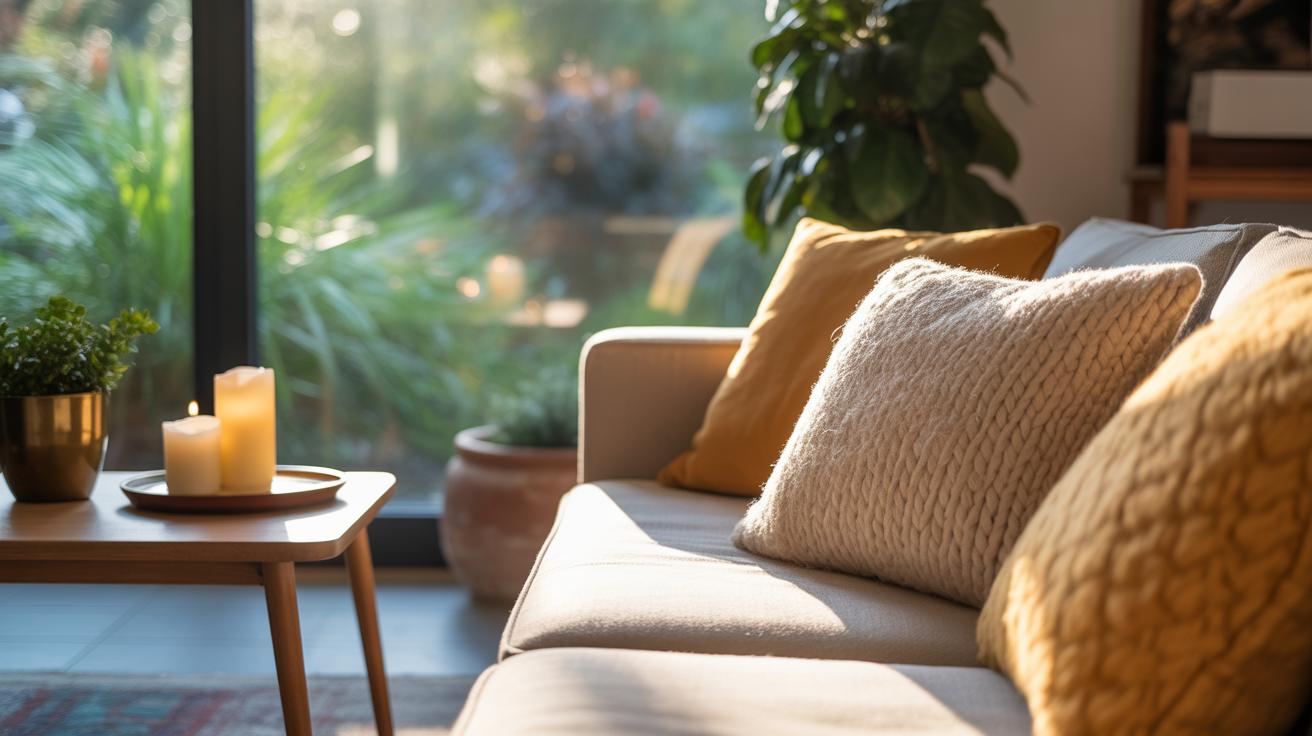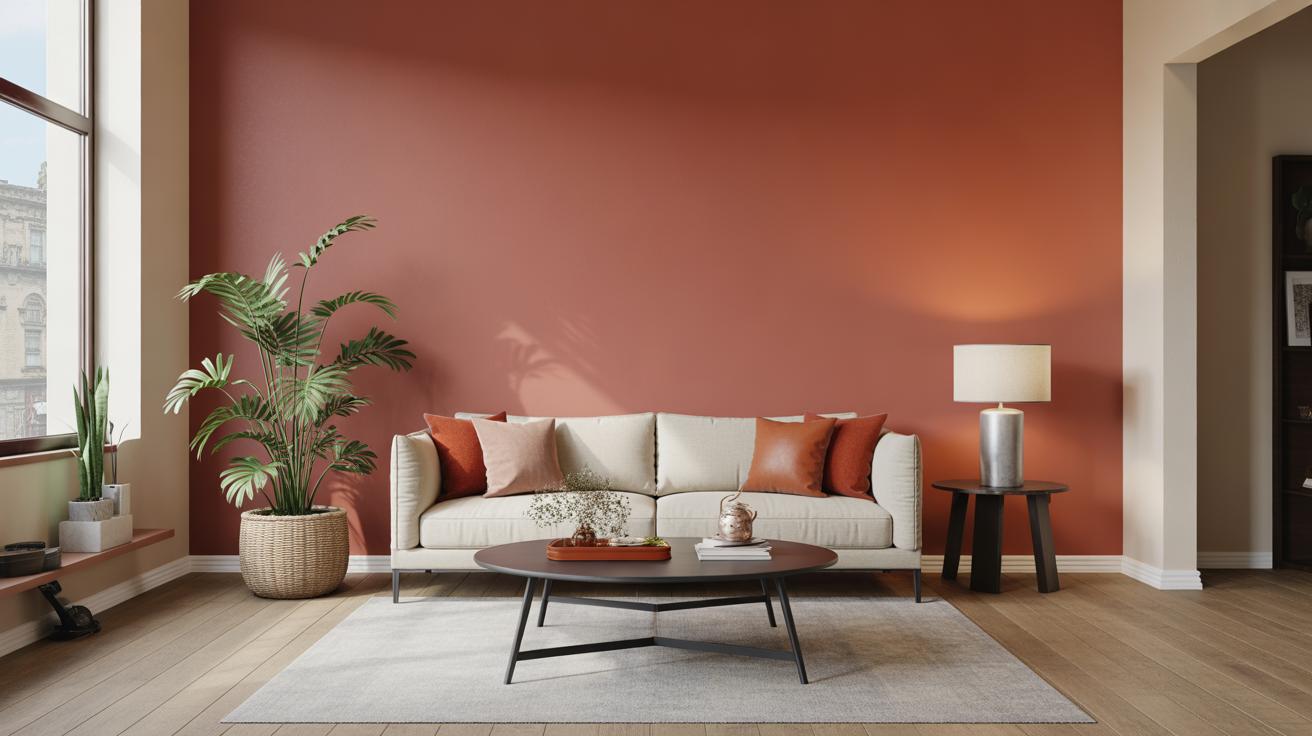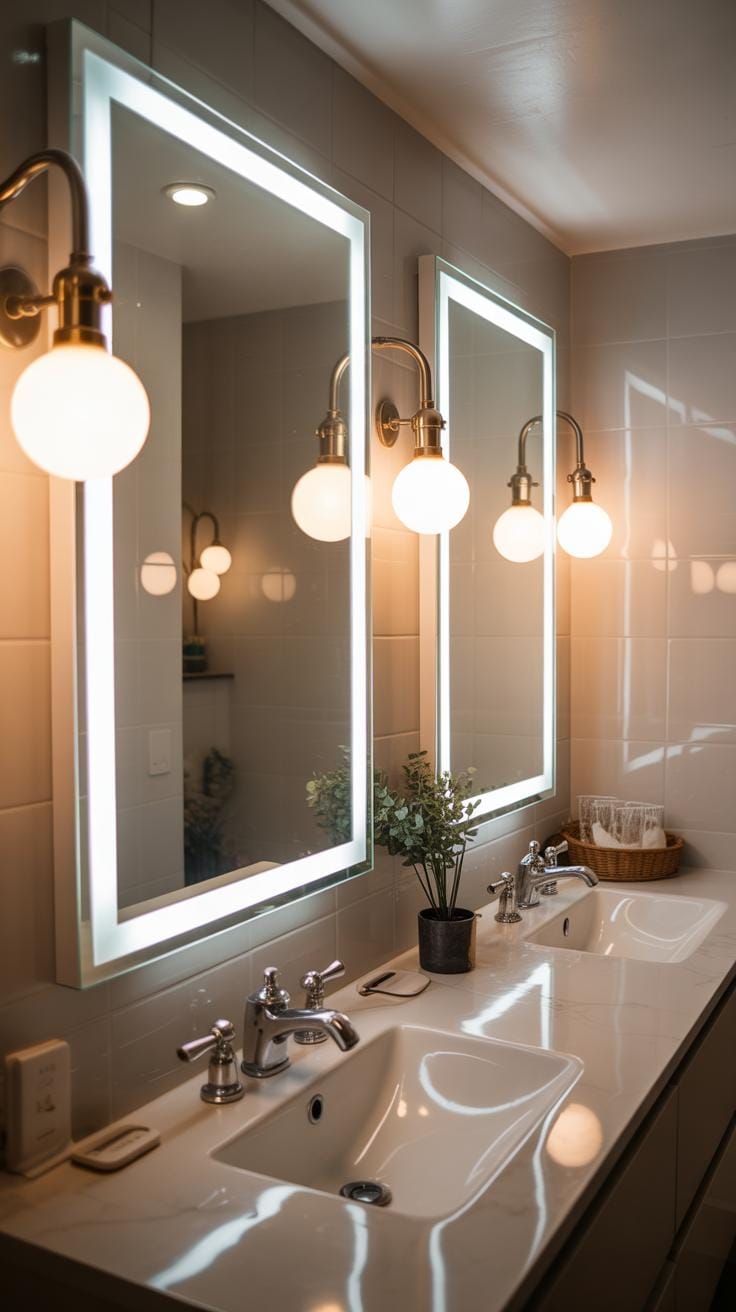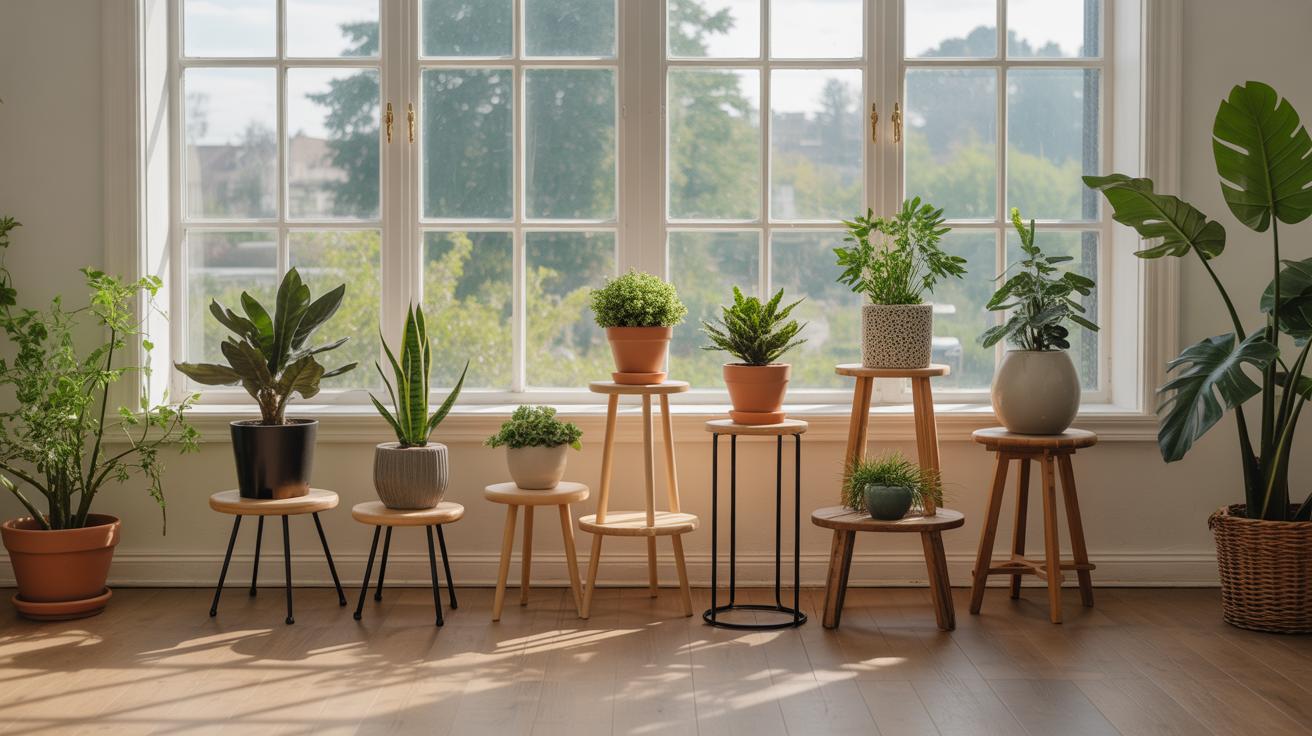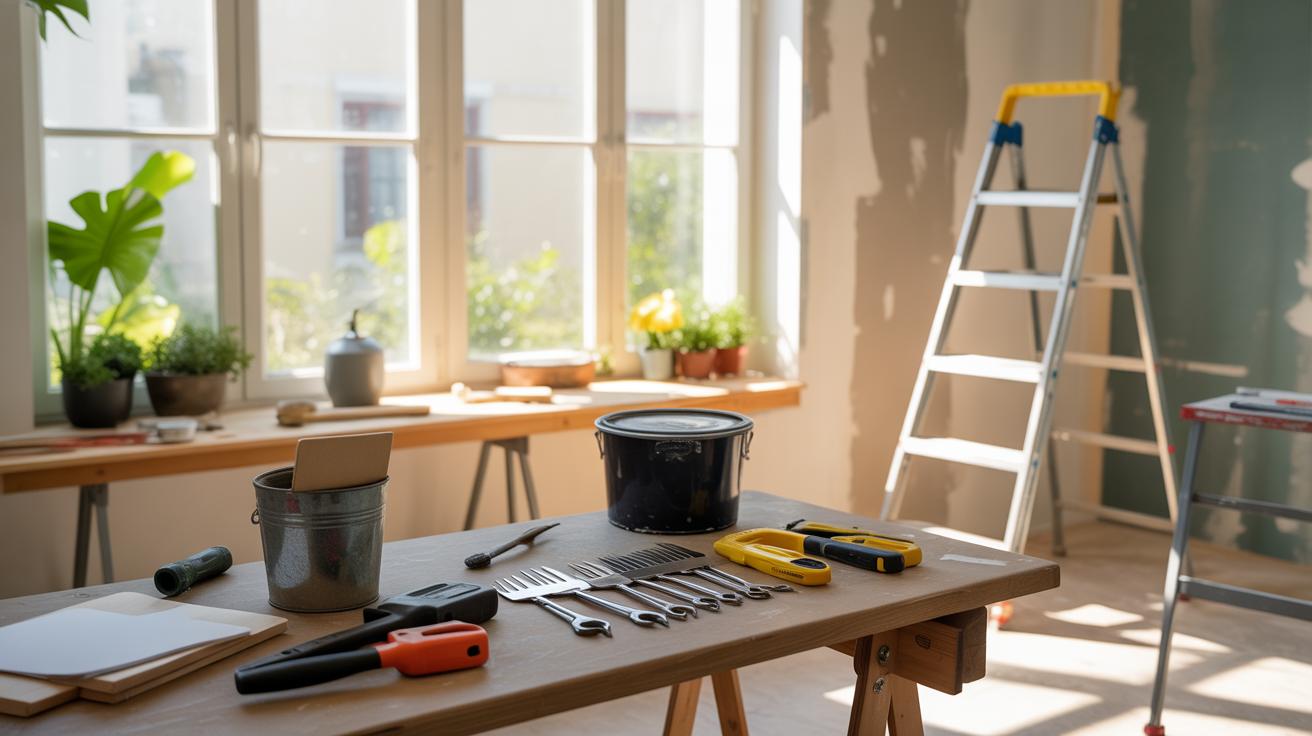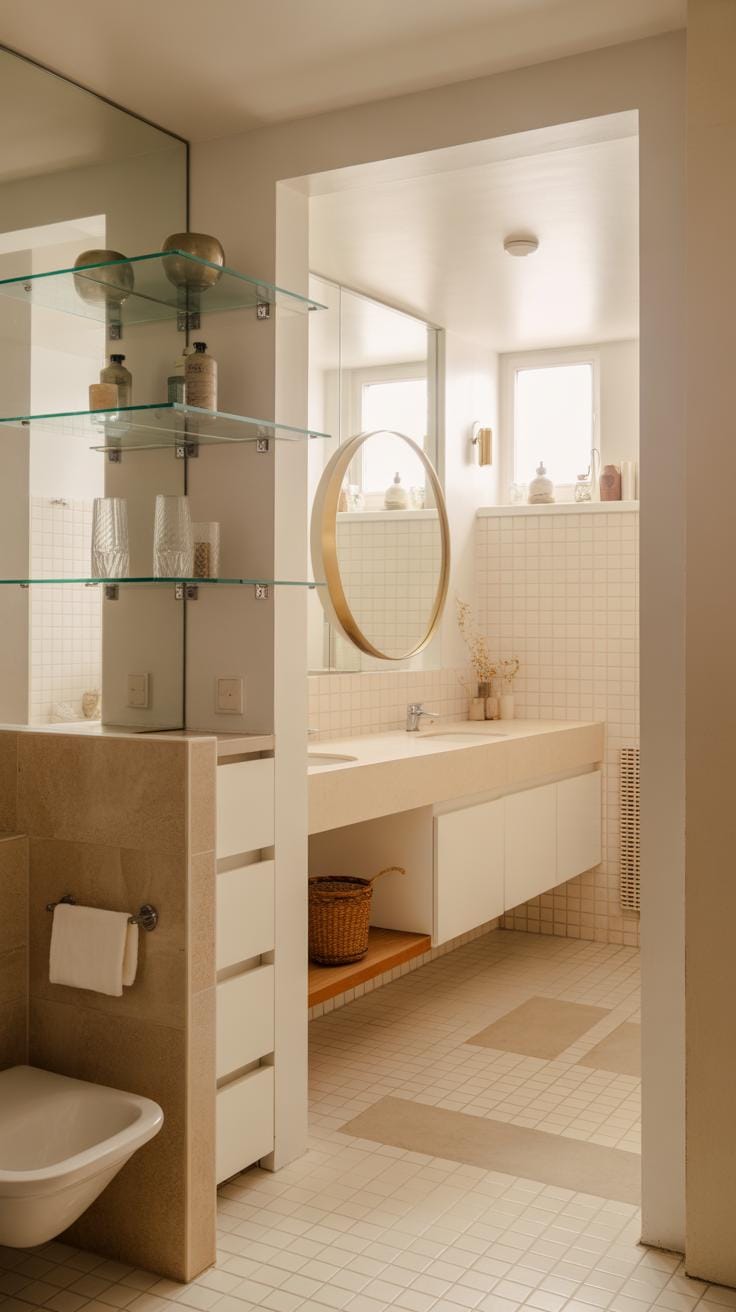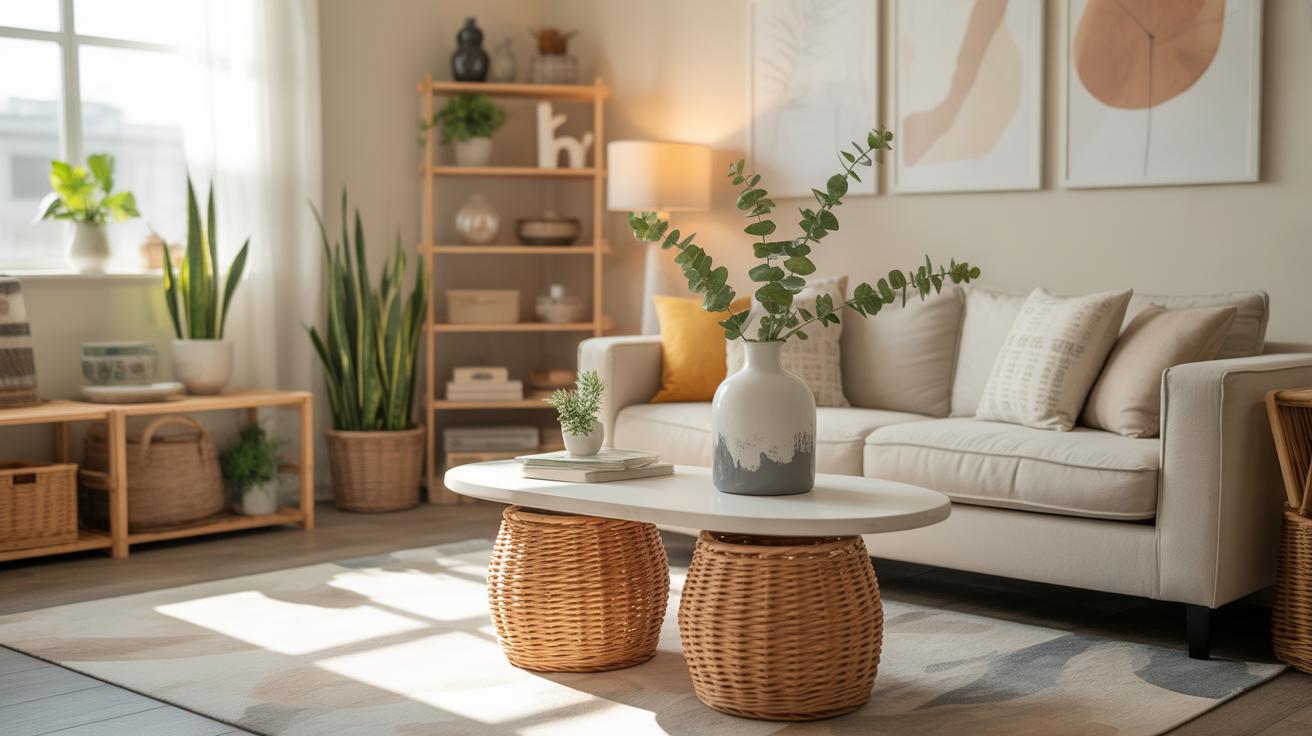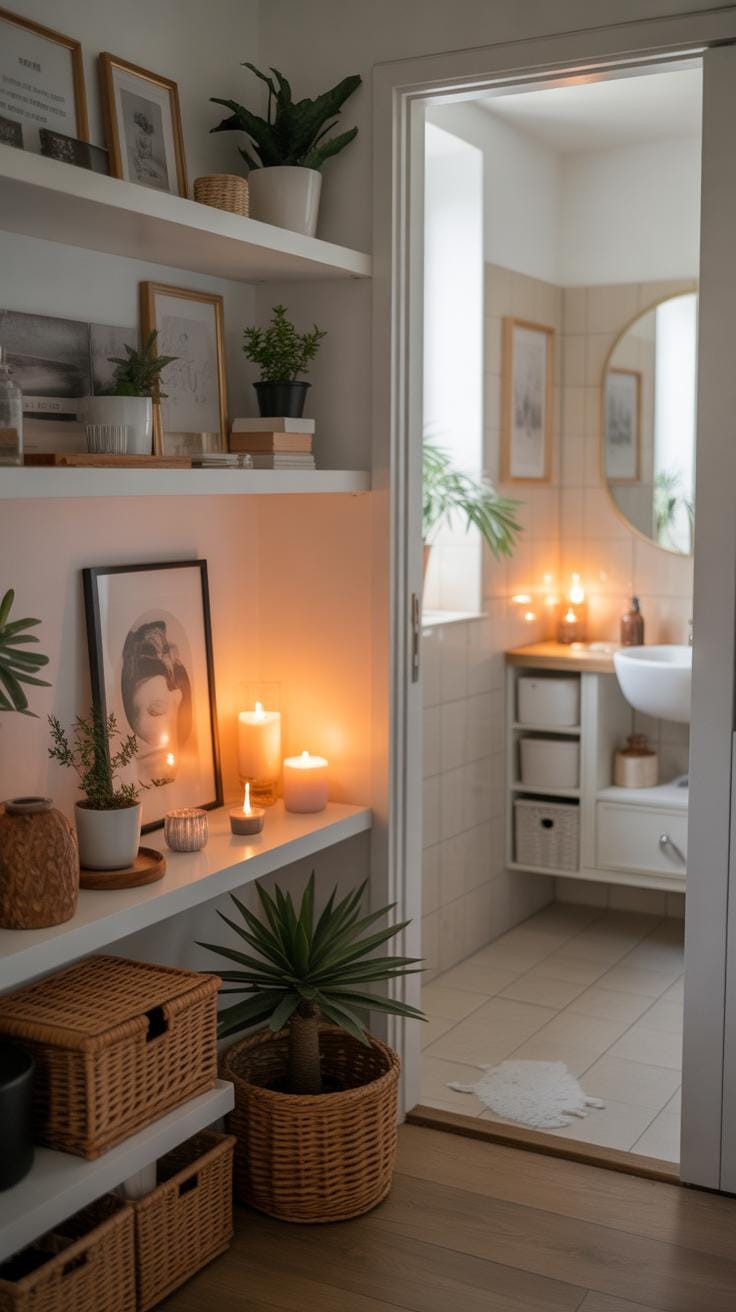Introduction
Small bathrooms can be challenging to design and decorate due to their limited space. An affordable small bathroom makeover is not only possible but also a great way to add value and comfort to your home. You can transform your tiny bathroom into a stylish and practical area by focusing on smart layouts, space-saving solutions, and budget-friendly updates.
This article explores affordable small bathroom makeover ideas for tiny spaces. You’ll discover practical tips on maximizing space, improving lighting, and choosing the right materials and fixtures. These ideas help you create a bathroom that feels larger and more comfortable without a large expense.
Planning Your Small Bathroom Makeover
Assessing Your Small Bathroom
Before jumping into any changes, taking a moment to really look at your small bathroom’s current state can save you from later headaches. Try to be honest with yourself: what works, what doesn’t, and what’s just there because it never got questioned? Check the layout—are fixtures cramped or oddly placed? Look at storage too. Does the space have enough spots for your essentials, or are things constantly cluttered? Lighting plays a surprising role in how roomy a bathroom feels; dark corners can make a small space feel even smaller. And then there are those fixtures—maybe some are outdated or oversized for your tiny room. Consider what you want to keep because it still serves you well and what might benefit from an upgrade or removal. Sometimes, removing one bulky cabinet can open up quite a bit of breathing room.
Setting a Realistic Budget
Budgeting for a small bathroom makeover might feel tricky, especially when unexpected issues tend to pop up. It helps to write down everything you want and then sift through the list, separating needs from nice-to-haves. Remember, you don’t need to replace every fixture or buy the most expensive tiles to get better function or a fresh look. Think about costs for materials and any labor, if you’re not doing the work yourself. Don’t forget to leave a little wiggle room—sometimes plumbing or electrical fixes cost more than expected, or you might spot a sale that lets you upgrade a key item without blowing your budget. Prioritize spending on things that will improve daily use: a new faucet or better lighting, for example, might make more difference than a trendy countertop.
Why Planning Is Essential
In a small bathroom, every inch counts. Skipping planning might seem tempting, especially if you want quick changes, but it usually leads to frustration. Careful measurement is the first step—you’ll want to be sure your choices fit the space, especially when dealing with plumbing and electrical setups that limit where you can place sinks or showers. I’ve learned the hard way that even a tiny miscalculation might mean ordering a vanity that’s just too wide or installing lighting that doesn’t quite reach. Also, planning helps you make choices that suit how you actually use your bathroom, rather than what looks nice in a magazine. Balancing your wants with practical needs—and knowing your limits—sets a foundation that makes the rest of the makeover smoother and, in the end, more satisfying.
Maximizing Space with Smart Storage Solutions
Small bathrooms often feel like a puzzle when it comes to storage. The limited square footage means every item—soap, towels, toiletries—has to have a place, or things end up cluttering the sink or floor. Finding spots for everything without crowding the room can feel like a challenge. But there are practical ways to keep things organized and accessible, without sacrificing precious space.
Wall shelves are a simple fix. Narrow ones above the toilet or next to the mirror can hold everyday essentials within easy reach. Medicine cabinets, especially recessed ones, offer hidden storage and free up countertop space. Under the sink, choosing organizers that fit around plumbing prevents wasted gaps and keeps small items sorted. Hooks are another easy addition; hanging robes, towels, or even baskets on hooks near the door or shower helps keep clutter down.
Using Vertical Space
Walls are probably the most underused real estate in tiny bathrooms. Placing storage up high leaves floor space free for moving around, which can make a small room feel less cramped. Installing shelves or slim cabinets near the ceiling can hold things you don’t need daily but want handy, like extra shampoo or cleaning supplies.
Towel racks placed vertically or stacked enable you to store more towels in less space. I’ve seen bathrooms where a couple of floating shelves plus a tall cabinet made a huge difference without making the room feel boxed in. It’s a bit counterintuitive—filling walls few people think to use—but it works.
Choosing Multi-Functional Furniture
Furniture and fittings with double duty take up less space but do more work. Take mirrors with built-in storage: you get a reflective surface and a hidden spot for small items like toothbrushes or medications. Vanities with drawers or open shelving below sink basins provide spots to stash hair tools or cleaning products.
Sometimes, going for something that does two things means you don’t have to add more furniture or racks elsewhere. It might cost a little more upfront, but often pays off by keeping your bathroom neat and feeling bigger. When picking these pieces, think about what you really need and how you move around the space. After all, even the best storage won’t help if it’s not easy to use.
Improving Bathroom Lighting
Lighting in a small bathroom can make all the difference between feeling cramped and claustrophobic or open and inviting. Light affects how you perceive space—too dim, and the room feels smaller and less welcoming. Brighten the area well, and suddenly it feels bigger, fresher, even more comfortable. But it’s not only about brightness. Where you put your lights changes everything, which might be a surprise if you’ve never really thought about it.
Placing lights above or around your mirror helps avoid shadows on your face, making daily routines easier. Ceiling fixtures spread light evenly across the room but sometimes leave corners dull. Combining both types lets you adjust for the best effect.
Selecting the Right Light Fixtures
You want lights that fit small spaces without crowding them, so smaller but powerful fixtures usually win. LED lights are practical—they use less energy and pack a punch in brightness, plus they last longer, which saves money in the long run. Vanity lights mounted beside or above the mirror help with grooming tasks; they’re also a chance to add a bit of style.
Ceiling-mounted fixtures or flush mounts take up no extra space but still provide ample light. Sometimes, recessed lights work well, but they can feel a bit clinical unless chosen carefully. Think simple, space-saving, and adjustable.
Using Natural and Reflective Lighting
Don’t underestimate natural light—even a small window can brighten the room more than you might expect. If your bathroom doesn’t have a window, maybe consider a skylight or a frosted door with a window. The goal is to bring in whatever daylight you can.
Mirrors play a double role here. They reflect light, bouncing it around the room, so placing a large mirror opposite a window magnifies brightness. Light-colored walls also work subtly—white or pale tones bounce light better than dark hues, which tend to absorb it.
Sometimes, after a long day, I’ve realized the difference just adding a bigger mirror made—space felt less confined, and the light was more even than before. Little adjustments can add up.
Choosing Colors and Materials
When it comes to small bathrooms, color choices aren’t just about style—they actually change how you feel in the space. Light hues like white, beige, and soft pastels can make your bathroom feel less cramped by bouncing light around. I once tried a pale blue in my own tiny bathroom, and it really did open things up, though it took a bit of time to find the right shade that didn’t feel cold.
Reflective surfaces play their part too. Think glossy tiles or mirrors placed thoughtfully—they create illusions of depth. But too much shine can sometimes feel overwhelming, so maybe balance is key.
For materials, durability is crucial. Floors and walls face moisture constantly, so options that resist water and don’t demand endless upkeep are smart picks.
- Ceramic or porcelain tiles are popular for floors—hardwearing and moisture-resistant.
- Vinyl flooring might not be everyone’s first thought but works well if you want something soft underfoot and easy to clean.
- For walls, moisture-resistant paint or waterproof panels avoid mold problems, especially in steamy spots.
- Fixtures made from stainless steel or coated metal tend to last longer without rusting, which can save you hassle.
So, would you rather pick something purely aesthetic or lean more toward function? It’s a balance. You might find yourself juggling a bit between what looks open and what survives daily use. That’s just part of the process when dealing with small spaces, I think.
Updating Fixtures and Hardware
Replacing old, bulky fixtures can make a surprisingly big difference in a small bathroom. Outdated faucets or large vanity units sometimes take up more space than needed—maybe you’ve noticed that cramped feeling when trying to move around. Swapping these with modern, slim-profile options can open up movement and freshen the look without much effort or cost.
Look for compact sinks that fit neatly into corners or float on walls rather than sitting on bulky cabinets. Small toilets with streamlined designs save a few inches—enough to feel less crowded. Shower units come in various space-saving styles, like corner stalls or sliding doors, which avoid swinging doors that steal floor space.
When choosing hardware like faucets, towel bars, or handles, think simple and subtle. Narrow, vertical towel bars take less wall room than wide racks. Single-handle faucets cut down on clutter while keeping control easy. A few well-placed hooks can replace larger racks, offering storage without overwhelming the space.
These updates don’t need to break the bank either. You might find surprisingly affordable fixtures at local home stores or online. Sometimes even replacing just the faucet or cabinet knobs instantly renews the bathroom’s feel. Have you tried switching to a compact sink before? It could change how comfortable your bathroom feels, and honestly, that small extra space can matter more than you’d expect.
Incorporating Mirrors and Glass Elements
Mirrors and glass doors do more than just look nice in a small bathroom—they actually play a big role in making the space feel larger. A well-placed mirror can bounce light around and create depth where there’s none. You might think a tiny wall mirror is enough, but honestly, larger mirrors do wonders. They stretch the visual boundaries of your bathroom, tricking your eyes into thinking the room extends beyond its real size.
Using Large and Well-Placed Mirrors
If you want to see real change, consider installing a large mirror above the sink or even all the way across one wall. It doesn’t have to be expensive; some frameless mirrors or simple designs work just as well. Placing mirrors opposite windows or light fixtures helps reflect natural or artificial light, which brightens up the space even more. Now, there’s something about a big mirror that catches your eye instantly—and it opens up the room in ways that wallpaper or paint alone can’t achieve.
Choosing Glass Shower Doors Over Curtains
Glass shower doors make a noticeable difference compared to shower curtains, especially in snug bathrooms. Curtains tend to eat up a lot of perceived space—they break the sightline and make rooms feel boxed in. Glass doors keep everything visible and open, which reduces that cramped feeling. Plus, glass doesn’t absorb light; it lets it pass through, keeping the whole area lighter and airier. Even a thin frame or a sliding design can maintain this openness, though sometimes, I wonder if completely frameless doors are a little too fragile for everyday use.
Adding Personal Touches and Dcor
Once you’ve addressed the bigger changes, it’s tempting to rush into decorating your small bathroom, but a bit of patience pays off. You want to fill the room with personality without overloading the space—finding that exact balance can be tricky. Think about picking colors that brighten but don’t overwhelm. Soft pastels or light neutrals often work best, yet sometimes a splash of bold color in a small item can surprise you by energizing the whole room.
Choosing minimalist décor is a smart move. Instead of cluttering shelves with knick-knacks, select one or two simple pieces that speak to your style—like a sleek soap dispenser or a small patterned towel. Minimal doesn’t mean boring; a carefully chosen item can make a subtle statement.
Small plants can breathe life into a bathroom, literally. A tiny succulent on the windowsill or an air plant in a glass bowl can add freshness without demanding much space. Art, too, can lift the mood—consider a compact, framed print or a canvas that reflects your favorite colors or themes. Yet, don’t force it; if you feel the room’s already “busy,” leaving walls bare might actually be better.
So ask yourself: what simple touches will bring you joy each day, still leaving room to move? Sometimes less really is more, but then again, a little personality goes a long way in a tiny bathroom.
Maintaining Your Small Bathroom PostMakeover
Keeping your bathroom looking fresh after a makeover can feel like a challenge, especially when space is tight. You might find that clutter sneaks back in faster than you expected. It’s easy to underestimate how quickly small items—like toothpaste tubes, razors, or makeup—crowd every surface. Maintaining order means regular habits that prevent mess rather than constant cleanups.
Cleaning Tips for Small Bathrooms
Small bathrooms benefit from quick, focused cleaning routines. Instead of tackling everything at once, try wiping down sinks and countertops daily. A gentle all-purpose cleaner works well for most surfaces, but for tiles, a mix of vinegar and water can keep grout from darkening without harsh chemicals. Spray, wait a few minutes, then scrub with a small brush. Also, drying surfaces after each use reduces water spots and mold growth, which is a common nuisance in confined spaces.
Staying Organized Long-Term
How do you avoid clutter creeping back? Start by giving everything a “home.” Use vertical storage where you can—think shelves or narrow cabinets—to keep essentials up and out of the way. A simple basket for everyday items like soap or brushes helps corral everything in one place. And try to adopt small habits: put things back immediately, don’t let towels pile up, and regularly toss expired products. These little actions make a big difference over time. You might find it easier to keep the space calm and functional than you expected—though sometimes it’s a near thing.
Conclusions
Small bathroom makeovers don’t have to be expensive or complicated. By using a few smart design tricks and budget-friendly updates, you can create a space that feels larger and works better for your needs. Consider maximizing storage, improving lighting, and choosing simple yet effective décor to freshen up your bathroom.
Remember, your small bathroom can be both functional and attractive. Focus on practical changes that fit your budget and style. These affordable ideas can make a noticeable difference without the need for major renovations.

